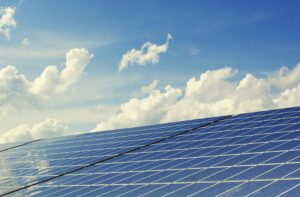1

On August 16, 2022, President Biden signed the Inflation Reduction Act (IRA), which includes the most significant spending commitments aimed at addressing climate change in the nation’s history. The various climate-focused initiatives in the IRA aim to reduce U.S. carbon emissions by 40 percent from 2005 levels by 2030.
The IRA also changes a piece of U.S. tax code that’s been in place since 2006: the 179D Energy Efficient Buildings Tax Deduction. The changes could hold significant financial benefits for both owners of newly constructed and existing commercial buildings, owners of multifamily buildings with four or more stories, and even construction contractors and engineering and architecture firms.
A tax break for “green” construction
Under the previous iteration, to qualify for energy reduction tax deductions under 179D, new buildings and retrofits had to reduce energy use by 50 percent relative to a benchmark structure. The IRA drops the 179D energy reduction requirement to 25 percent to receive a partial benefit.
The base deduction now starts at 50 cents per square foot for energy savings of 25 percent and increases by two cents per square foot for each percentage point above that for a maximum $1 per square foot deduction. There is also a new bonus deduction if firms meet certain wage and apprenticeship requirements that can push the total deduction as high as $5 per square foot.
The revamping of 179D also allows buildings owned by tax-exempt entities such as churches, schools, private foundations, nonprofits, and tribal governments to pass the 179D deduction to architects, engineers, or design-build contractors. For the construction sector, this provision is expected to have the greatest impact for contractors involved in a building’s exterior envelope (roofing, siding, insulation), HVAC, and interior lighting systems.
Speedier and larger tax benefits
The IRA also speeds up the recouping of energy efficiency improvement costs. Prior to the IRA, 179D energy efficiency improvement deductions were written off over a 39-year period. Starting in 2023, a significant portion of 179D deductions can be written off in the first year, which will immediately improve building owner cash flow.
The IRA also holds tax benefits for homebuilders and developers of multifamily projects. As of January 1, 2023, the 45L energy-efficient home and multifamily credit will increase from $2,000 per dwelling unit to $5,000. Criteria for determining “energy-efficient” is regulated by the Department of Energy’s Energy Star and zero-energy-ready home programs. As with the 179D deductions, wage requirements must be met to take full advantage of the 45L credit.
An incentive to improve efficiency
Many experts in the real estate and construction sectors expect the 179D and 45L tax provisions in the IRA to trigger a wave of energy efficiency investment that has long remained pent-up because improvements were often too costly to implement.
>>Learn more about the energy efficiency and climate-related changes created under the Inflation Reduction Act.
Image credit: Pexelbay via Pexels